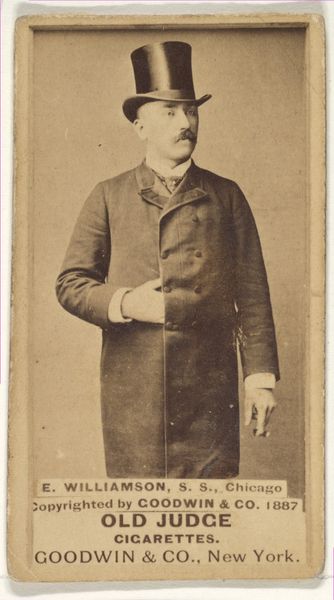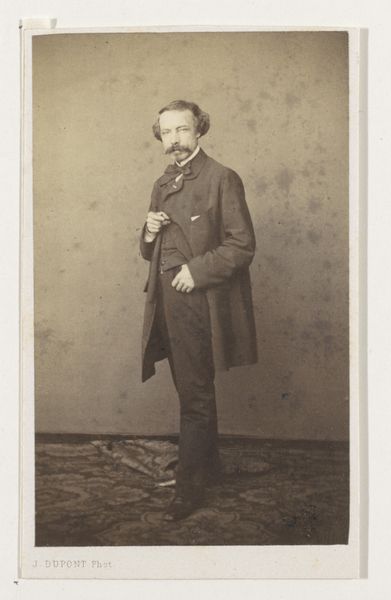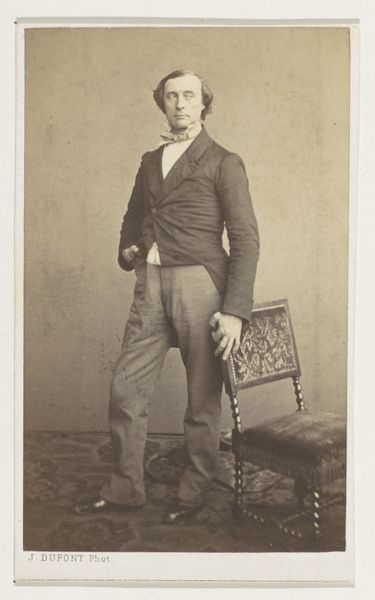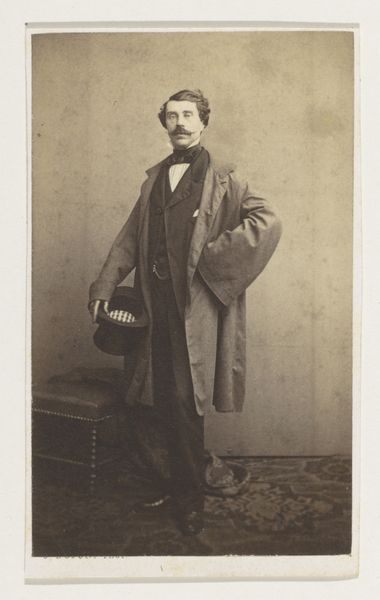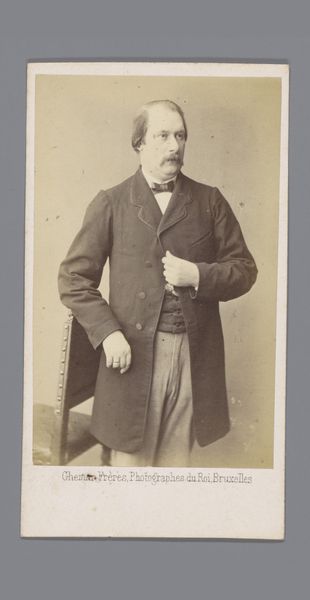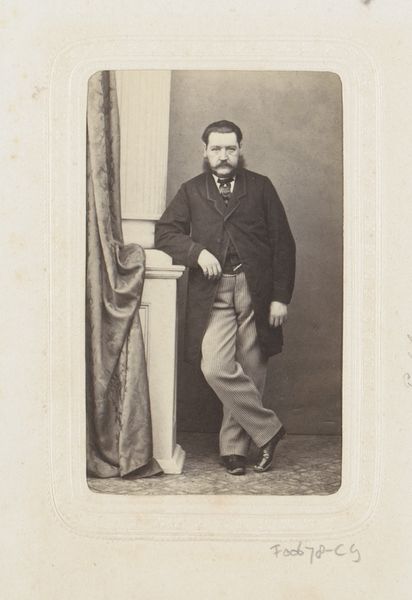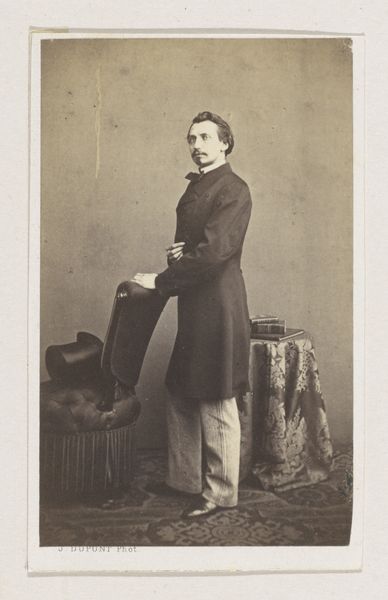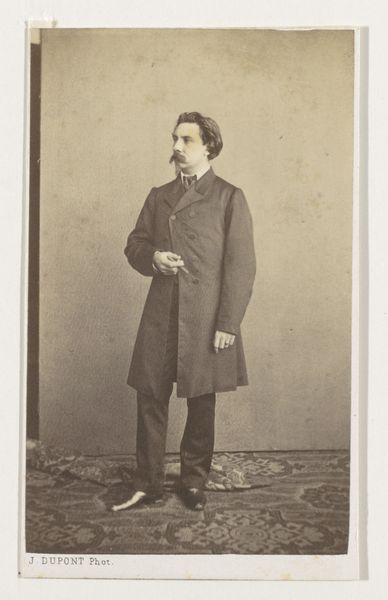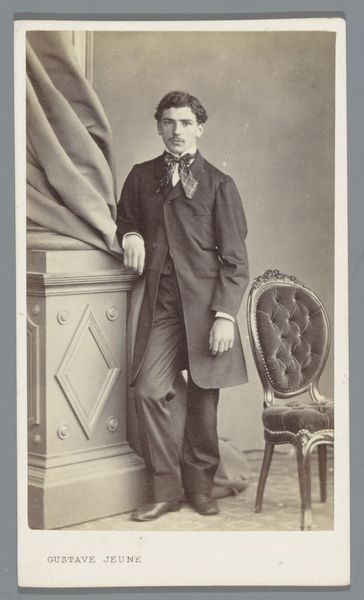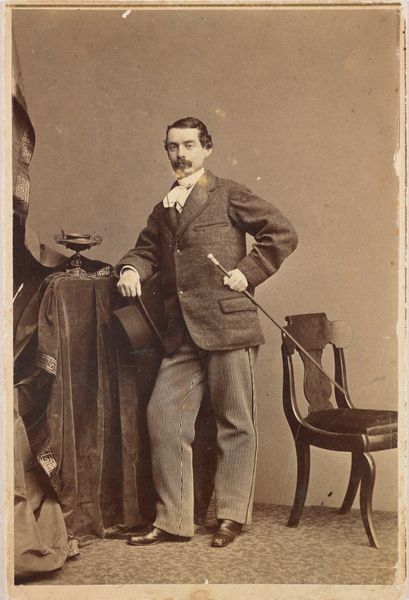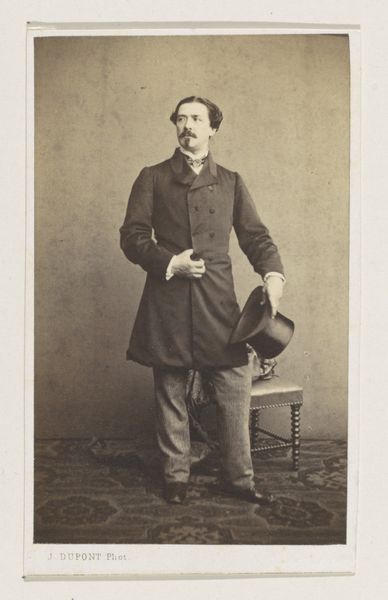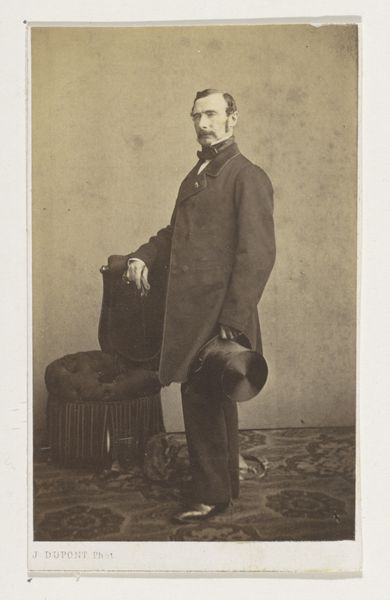
photography, gelatin-silver-print
#
portrait
#
photography
#
gelatin-silver-print
#
realism
Dimensions: height 102 mm, width 62 mm
Copyright: Rijks Museum: Open Domain
Curator: Looking at this image, I am immediately struck by how grounded it feels, a product of both the muted palette and the subject's relaxed posture. Editor: Yes, it's a gelatin-silver print from 1861, "Portret van de schilder Godfried Egide Guffens, ten voeten uit," or "Portrait of the painter Godfried Egide Guffens, full length" by Joseph Dupont. It presents the artist in a straightforward, almost documentarian way. Curator: The starkness of the background and the deliberate inclusion of what appears to be an ornate rug offer a window into the studio setup. The process of photography in the mid-19th century involved such staged scenarios; what statements did such constructed photographic practices produce? Editor: It raises interesting questions about artistic identity and public image at the time. Here we see Guffens, likely presented in the best light that the emerging medium of photography allowed at this point. Consider also the institutional role—were artists like Guffens, presented in galleries or photographic displays, seen as different, new public figures in society? Curator: Precisely. The making of a photographic portrait in itself was a rather intensive exercise. Exposure times would have necessitated careful poses, yet here Guffens adopts a casual, assured air that contrasts with the technical rigor demanded in capturing it. How does that inform perceptions of labour? Editor: His pose, relaxed as you observed earlier, speaks to an attempt to humanize the artistic figure, making him less of a detached genius and more of a relatable member of society. The rise of Realism likely impacted how such people wanted to be viewed at the time, captured on new photographic media. Curator: The materiality, the very photographic process and its availability, played an undeniable part in that cultural shift. These images, replicable to a point, opened possibilities of democratising portraiture, reducing the grip that commissioned painting held, altering our material relationship with representations of self. Editor: So it’s the shift from exclusive, often idealized painted portraits to relatively accessible photographic images, reflecting broader socio-political transformations? Curator: Absolutely. The medium informs and shapes the message, questioning what artistry, and creative labor, could or should embody. Editor: A thought-provoking interplay between the portrait's historical context and its underlying materiality. Curator: Indeed, a valuable piece when we contemplate the intersection between material agency and artistic portrayal.
Comments
No comments
Be the first to comment and join the conversation on the ultimate creative platform.
